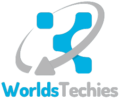Radon is a naturally occurring radioactive gas that comes from the breakdown of uranium in soil, rock, and water. It is invisible, odorless, and tasteless, which makes it difficult to detect without specialized equipment. Long-term exposure to high levels of radon can increase the risk of lung cancer. Because of this, monitoring radon levels in homes, workplaces, and outdoor environments has become a critical part of protecting public health. One of the most effective ways to track and manage radon exposure is through radon flux monitoring.
Understanding Radon Flux Monitoring
Radon flux monitoring refers to the measurement of the rate at which radon gas escapes from the ground or other surfaces into the air. Unlike traditional radon testing, which measures the concentration of radon in indoor air, radon flux monitoring focuses on the source of radon and how quickly it moves into the environment. By understanding the flux, scientists and safety professionals can identify areas where radon levels are likely to increase and take steps to reduce exposure. This method provides essential information for creating long-term safety strategies.
The Importance of Detecting Radon Early
Detecting radon early is crucial because the gas accumulates over time, especially in enclosed spaces. Buildings with poor ventilation, basements, and areas with high uranium content in the soil are at higher risk. Radon flux monitoring helps identify these high-risk areas before the gas reaches dangerous levels. By continuously measuring radon emissions, property owners and environmental agencies can implement safety measures in time, such as improving ventilation or installing radon mitigation systems. Early detection can significantly reduce the likelihood of long-term health problems caused by radiation exposure.
How Radon Flux Monitoring Works
Radon flux monitoring typically involves placing sensors or collection devices on the ground or other surfaces where radon is expected to emerge. These devices measure the rate at which radon is released into the air over a specific period. The collected data is then analyzed to understand patterns and fluctuations in radon emission. Some advanced monitoring systems can provide real-time data, allowing for immediate action if radon levels begin to rise. This approach not only identifies the presence of radon but also quantifies its movement, which is vital for effective risk management.
Benefits for Public Health and Safety
Implementing radon flux monitoring has several advantages for public health and safety. First, it allows authorities to map areas with high radon emissions, helping prioritize mitigation efforts. Second, it guides the design of safer buildings by providing information on the most effective ways to reduce radon intrusion. Third, it supports long-term health monitoring programs by keeping track of potential exposure risks over time. In essence, radon flux monitoring acts as an early warning system, enabling preventive measures before harmful exposure occurs.
Applications Beyond Homes
While radon monitoring is commonly associated with residential buildings, radon flux monitoring also has broader applications. It is used in schools, hospitals, workplaces, and even outdoor environments to assess environmental risk. Industries that involve mining, construction, or waste management can benefit from understanding radon flux to protect workers and the surrounding community. By using this proactive approach, organizations can comply with safety regulations and reduce liability while ensuring a healthier environment.
Conclusion
Radon is a silent threat that can have serious long-term health consequences if left unchecked. Radon flux monitoring provides a powerful tool to detect and manage this risk by measuring the rate at which radon enters the air. Early detection and continuous monitoring allow for timely interventions, reducing the likelihood of prolonged exposure and associated health problems. By incorporating radon flux monitoring into public health strategies and building safety practices, individuals and communities can take meaningful steps to prevent the dangers of long-term radiation exposure. This proactive approach ensures that people are protected from radon’s invisible risks, creating safer living and working environments for everyone.

